It’s finally spring (and practically summer) weather these days at the Chicago Botanic Garden, and we’re bursting to get outside, and get growing.
In just a few weeks, we’ll have the perfect chance to do just that. At Get Growing Weekend on May 18 to 20, gardeners will gather for gardening demonstrations, a spring marketplace, and a one-of-a-kind plant sale to celebrate the much-anticipated arrival of spring.
Part of the weekend’s festivities include a specialty plant sale hosted by The Woman’s Board of the Chicago Horticultural Society. On Friday, members of the Garden will enjoy early access to the plant sale from noon to 4 p.m.; the plant sale will open to the public on Saturday and Sunday. A highlight of the sale is the “potted paradise” selection, which features composed planters grown on-site and designed by horticultural celebrities, as well as our own staff and Woman’s Board members.
We couldn’t wait to get a sneak peek, so we talked with celebrated designer Bunny Williams of Bunny Williams Interior Design about her potted paradise design.
Q: Describe your process for designing your container this year. What makes a good container?
A: One of the things I’m always thinking about when I’m doing a container is height. When you first plant a container, all of the plants are very small. But a month later when they’ve grown in, they’re at their full profusion. They look quite different. You have to think in advance about plants growing to varying heights. For instance, I always like to have something that hangs over the sides of the container, like the Silver Falls dichondra (Dichondra argentea ‘Silver Falls’) that I’ve included in my Potted Paradise container. And then something that stands tall, like the Mystic Spires Improved salvia (Salvia ‘Balsamispim’).
Q: What colors work well in a container?
A: I always like to use a simple color palette in containers. For this one, it’s all about shades of purple, black, and green. It makes for a more effective container than if you try to put too many colors in it. In your garden, you often mix containers together, so if you have containers with their own color schemes situated next to each other, you can have a more controlled color scheme overall.
Q: How do you use texture in your containers?
A: You don’t want every leaf to be exactly the same. In my Potted Paradise container, there are six plants, each with different leaf textures. I chose Mystic Spires Improved salvia (Salvia ‘Balsamispim’), Pinball™ globe amaranth (Gomphrena globosa ‘Pinball Purple’), Primo™ Black Pearl coral bells (Heuchera ‘Black Pearl’), Solar Power™ sweet potato vine (Ipomoea batatas ‘Black Improved’), Silver Falls dichondra (Dichondra argentea ‘Silver Falls’), and Kent Beauty oregano (Origanum rotundifolium ‘Kent Beauty’). The different textures set the plants off when you see the relationship between the different foliage. It makes the container more interesting if something is not in bloom.
Q: What’s the best thing about planting containers?
A: What’s interesting and fun about containers is you have to know a little bit about what each plant is going to do. The salvia is tall, and so I know that will be the centerpiece of my container. When you go to the nursery, I enjoy making a grouping right there in the store. You can see the textures together, and choose what makes sense based on a few basic principles: leaf texture, differentiation, and colors of the same family.
©2018 Chicago Botanic Garden and my.chicagobotanic.org

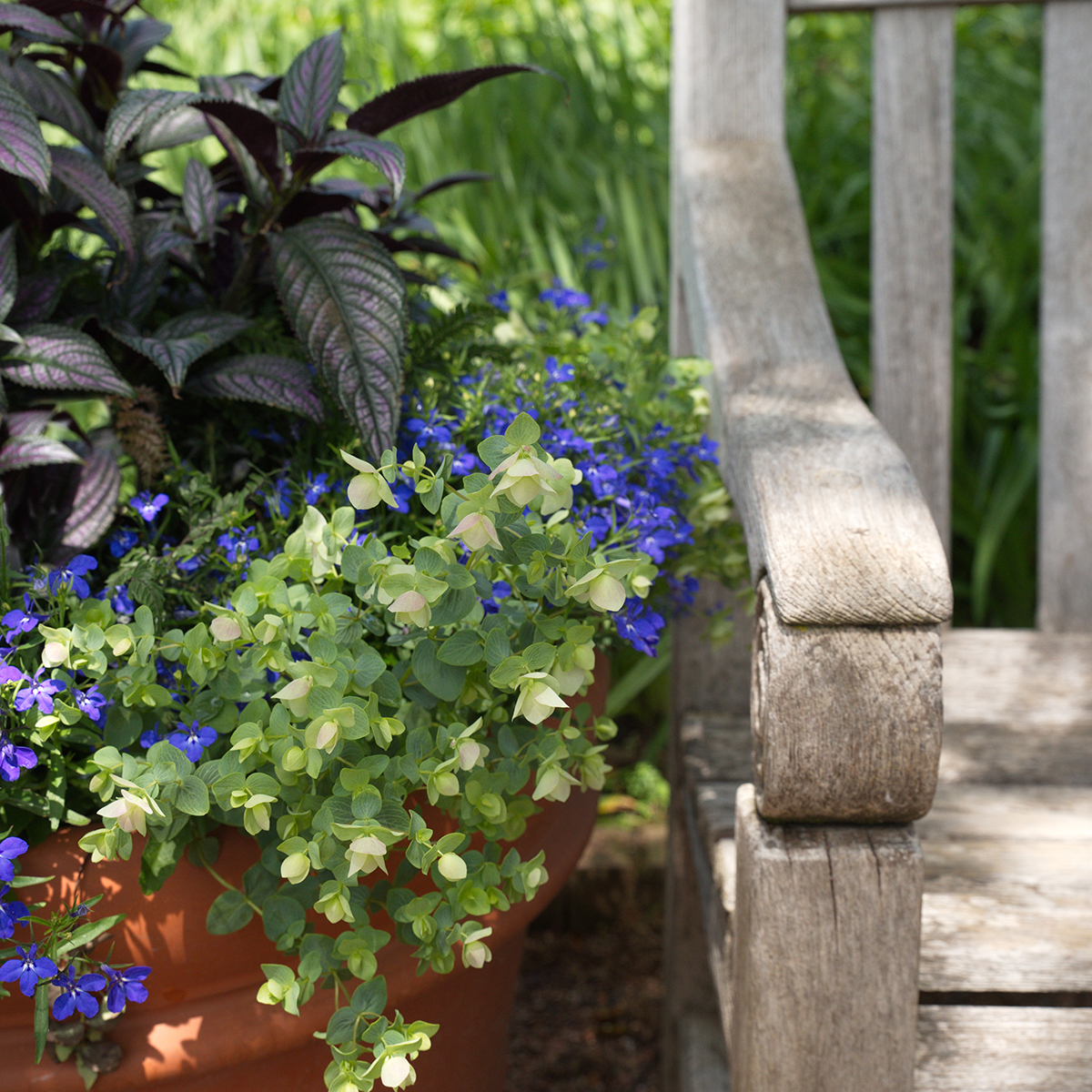
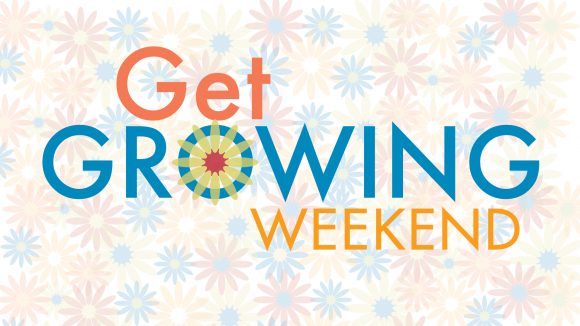
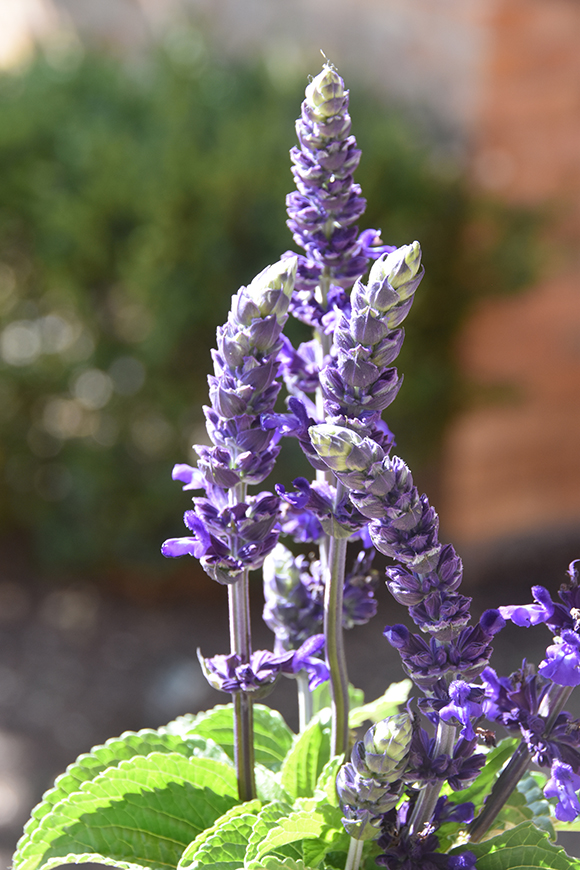
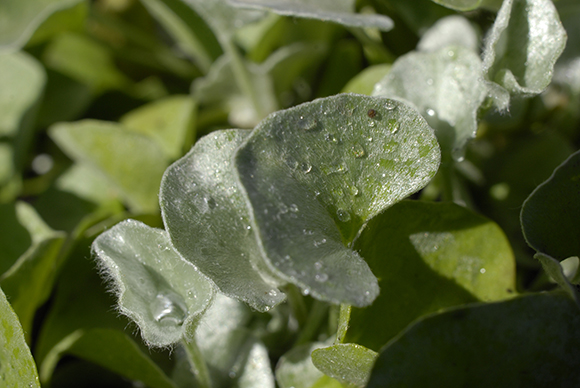
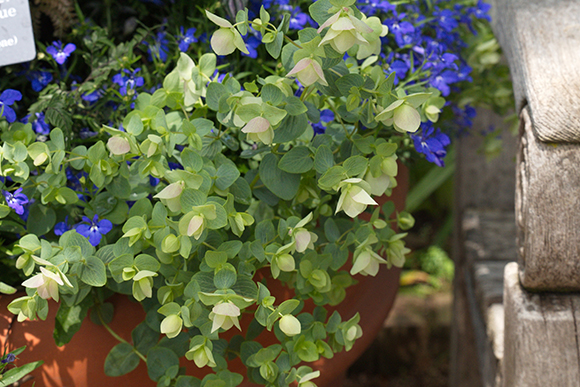
Beautiful and interesting! How much sun is needed for this planter?
Hi, Marion. Full sun is best for this planter; most of the plantings require full sun to part shade.